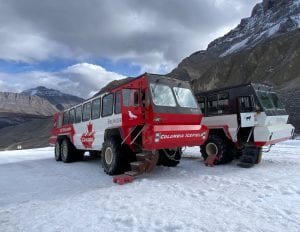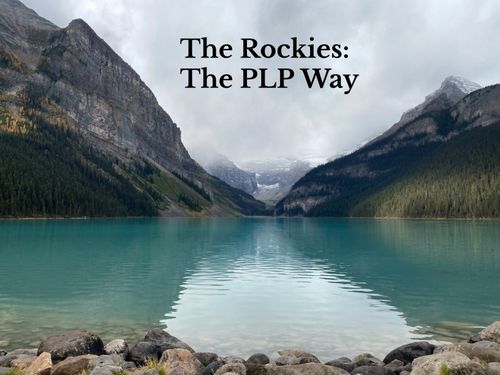DRIVING QUESTION: How have I demonstrated growth as a learner so far this year?
8 months ago, I started grade 9. In eight months, I have drastically changed the way, I learn, the way I live, and the way I think. In eight months, I have had my fair share of successes, failures, learning moments, and about everything in between. I have accomplished things I never thought I would, felt proud of myself, and opened my mind up to the possibilities that school and the world have in store for me. Alongside that, I have failed in the ways I didn’t know I could, tried new things, and made mistakes. I feel more connected to my work than ever. I have dared to learn, dared to dream, dared to be the best human being I can be. And for these 7 minutes, I would like to share my greatest moments in PLP this year with you.
 To start, I’m going to jump into my biggest learning moment so far: The Winter Exhibition. If anyone wasn’t aware of the grade 9 project, we had to make a Rube Goldberg machine based off a revolution, each step coronating with a part of history in that time. When we were put into a group at the beginning, everything was going amazingly. We collaborated, brought new ideas, and helped with equipment and items we needed, but as time ticked away, things took a turn for the worse. We broke off into groups of 2 to tackle each machine module, and by the day of the exhibition we had all our necessary pieces to set up, yet when we tried to put them all together, the top part was way too big. No one had been on the same page, no one had even talked. We spent the majority of that day frantically working to try and make something happen. In the end, we got the second half to be a successful machine and rolled with that. Now, was this an absolute disaster? Yes. Should we have probably tried everything together before the day of? Absolutely. But did we also learn, grow, and experience strong self-reflection? 100%. I learned that if you want something done, you have to do it yourself and find those people who can help you achieve your goals, instead of holding you down. I also learned how hard it was to work in big groups where everyone wanted different things, but it is now a skill of mine I can use in the future. So this year, my biggest fail, my biggest challenge, was my biggest learning, and honestly, I wouldn’t have it any other way.
To start, I’m going to jump into my biggest learning moment so far: The Winter Exhibition. If anyone wasn’t aware of the grade 9 project, we had to make a Rube Goldberg machine based off a revolution, each step coronating with a part of history in that time. When we were put into a group at the beginning, everything was going amazingly. We collaborated, brought new ideas, and helped with equipment and items we needed, but as time ticked away, things took a turn for the worse. We broke off into groups of 2 to tackle each machine module, and by the day of the exhibition we had all our necessary pieces to set up, yet when we tried to put them all together, the top part was way too big. No one had been on the same page, no one had even talked. We spent the majority of that day frantically working to try and make something happen. In the end, we got the second half to be a successful machine and rolled with that. Now, was this an absolute disaster? Yes. Should we have probably tried everything together before the day of? Absolutely. But did we also learn, grow, and experience strong self-reflection? 100%. I learned that if you want something done, you have to do it yourself and find those people who can help you achieve your goals, instead of holding you down. I also learned how hard it was to work in big groups where everyone wanted different things, but it is now a skill of mine I can use in the future. So this year, my biggest fail, my biggest challenge, was my biggest learning, and honestly, I wouldn’t have it any other way.
Alongside the failures, I have had so many accomplishments and proud moments. I went to Alberts and did hikes I didn’t even know I was capable of doing! I have grown with my peers at Loon Lake, opening our minds and emotions to each other. I have competed in DI and tied for 2nd! I have learned about a wide variety of topics, from the periodic table to Louis Riel to our creating thrillers. But one of my biggest achievements of this year was none other than my Frankenstuffie. The project was for us to sew the most creative creatures we could think of, write them a story, and turn it into a video. Like most of my projects, it started easy, getting to be fully immersed in the storytelling, but by the time the video part rolled around, I realized that this would be harder than I thought. I looked high and low to find photos for background and props, but nothing was working, so eventually started drawing. Before I even knew it, my Apple Pencil was taking control. And I am proud to say that everything in that video besides my Frankenstuffie is hand-drawn. All 2 minutes and 24 seconds of it. Boy was it a struggle, my hand cramping up countless times, getting bored, and almost giving up. I’m glad I didn’t though, because whenever I look back and reflect on it, I get overwhelmed with a feeling of pride, and that made all the hours of drawing worthwhile.
 To take it back the beginning of the year, I would like to talk about my learning plan. I still remember how I started my very first mPOL with it, and how it taught me a valuable lesson of expressing one’s true thoughts and opinions. I know this is only my first presentation of learning this year, but reflecting on this guide, it’s safe to say that I have almost accomplished everything in the growth categories. I have started asking for help when I’m struggling, and I have learned that failing is okay. I have continued to hand things in on time and will continue doing it. I have almost mastered the ways of constructive criticism and not coming off like a mean person, but that’s a department that still needs help. And I have finally started sticking up for myself in group projects, not letting people walk all over me and hand their work to me, and voicing my concerns. More than ever, I have become the learner that I dreamed of being, and setting these goals was like making a checklist of things that were holding me back from it.
To take it back the beginning of the year, I would like to talk about my learning plan. I still remember how I started my very first mPOL with it, and how it taught me a valuable lesson of expressing one’s true thoughts and opinions. I know this is only my first presentation of learning this year, but reflecting on this guide, it’s safe to say that I have almost accomplished everything in the growth categories. I have started asking for help when I’m struggling, and I have learned that failing is okay. I have continued to hand things in on time and will continue doing it. I have almost mastered the ways of constructive criticism and not coming off like a mean person, but that’s a department that still needs help. And I have finally started sticking up for myself in group projects, not letting people walk all over me and hand their work to me, and voicing my concerns. More than ever, I have become the learner that I dreamed of being, and setting these goals was like making a checklist of things that were holding me back from it.
In conclusion, I have demonstrated significant growth as a learner throughout this year. From facing challenges and failures to celebrating accomplishments and successes, I have embraced every opportunity to learn and grow. Through projects like the Winter Exhibition and Frankenstuffie, as well as experiences at Alberts and Loon Lake, I have pushed myself beyond my comfort zone and developed valuable skills in collaboration, creativity, and resilience. Reflecting on my learning plan, I can see the progress I have made in seeking help, meeting deadlines, and advocating for myself. Overall, I am proud of the learner I have become and am excited to continue on this journey of growth and development in the future! Thank you!

























